“This is priiiiitty!” That’s what I thought when I picked up my first French beaded flowers at an estate sale (the first in the slideshow below). That was about 23 years ago, and I spent (I think) $15 for the two-bloom bouquet.
I was hooked. I had to have more. I needed to know more. So I headed to eBay and watched every auction and bid on a few.
I would stumble upon large bouquets at antique stores, selling for hundreds of dollars—an impossible price point for a stay-at-home mom. Five years into my hunt, I found my first large bouquet for $60 at an antique store. I thought I hit the jackpot (many from that bouquet are pictured in the third image of slideshow below). I enjoyed them. But through the years as I collected more, I realized they weren’t that old. Probably from the 1960s or 70s.
My friend often spots French beaded flower bouquets at flea markets for me and says, “I don’t know if this is old…”
You’re not alone if you’ve ever picked up a beaded flower stem or bouquet and thought, “I don’t know if it’s old.” Even I get confused on occasion.

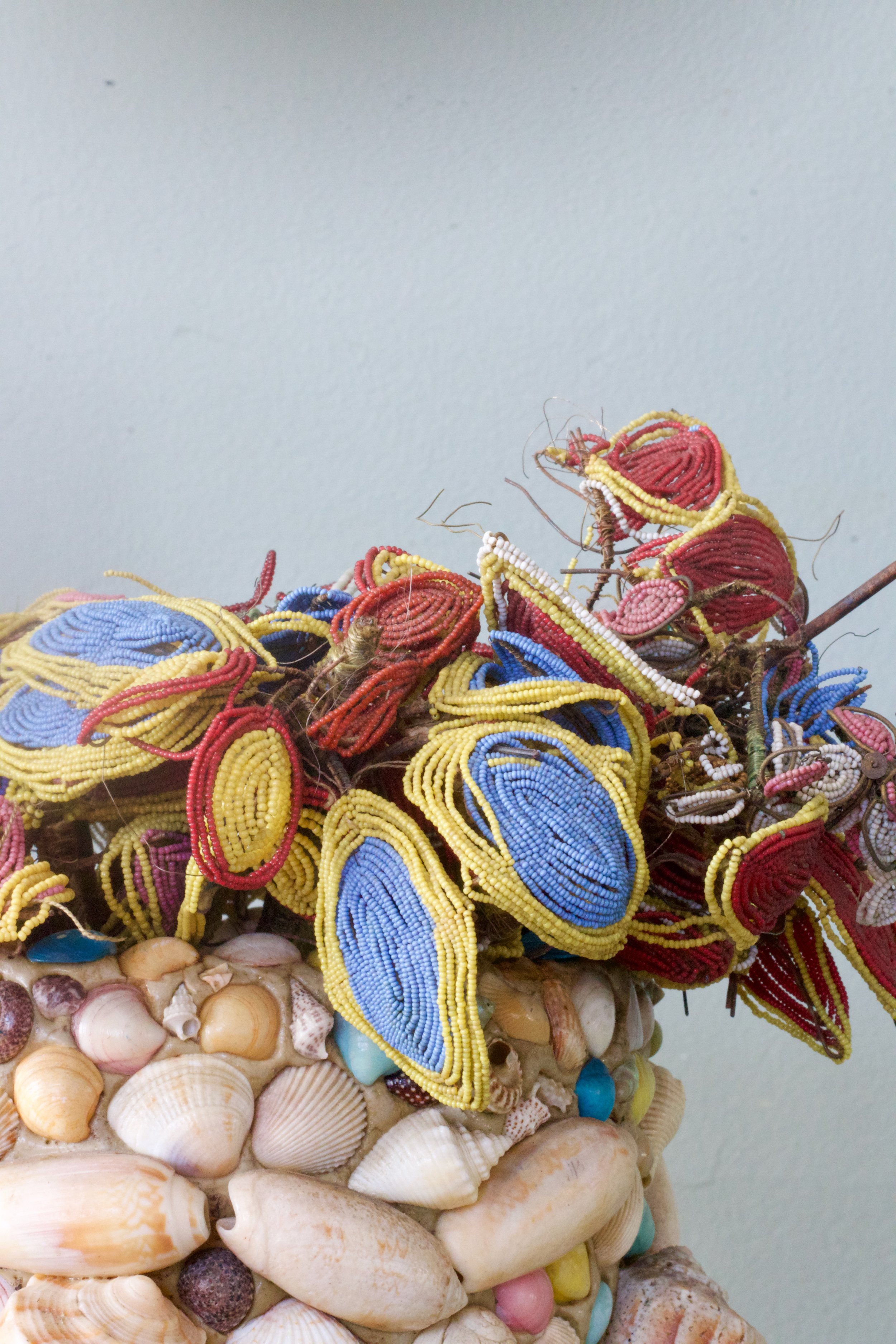


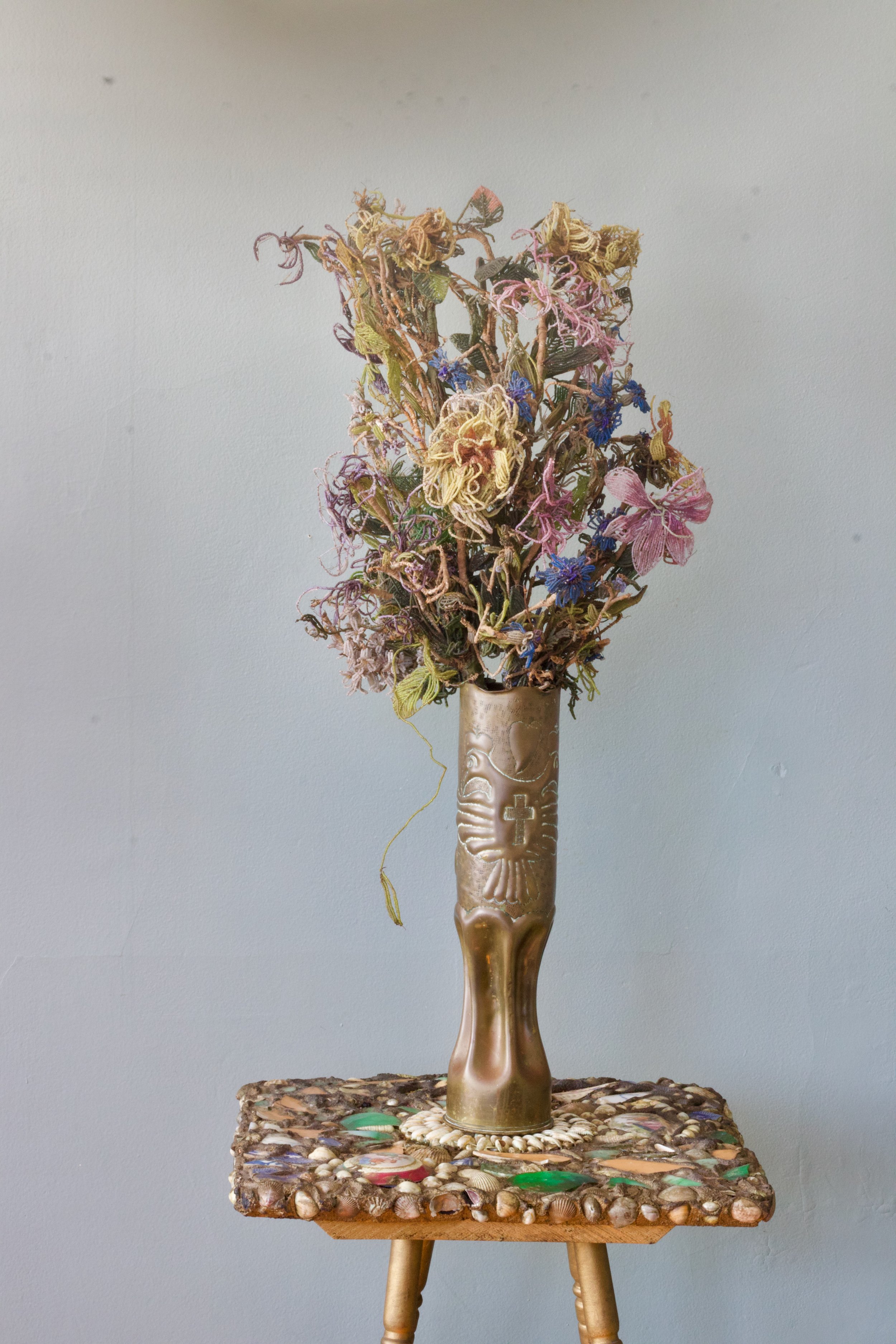
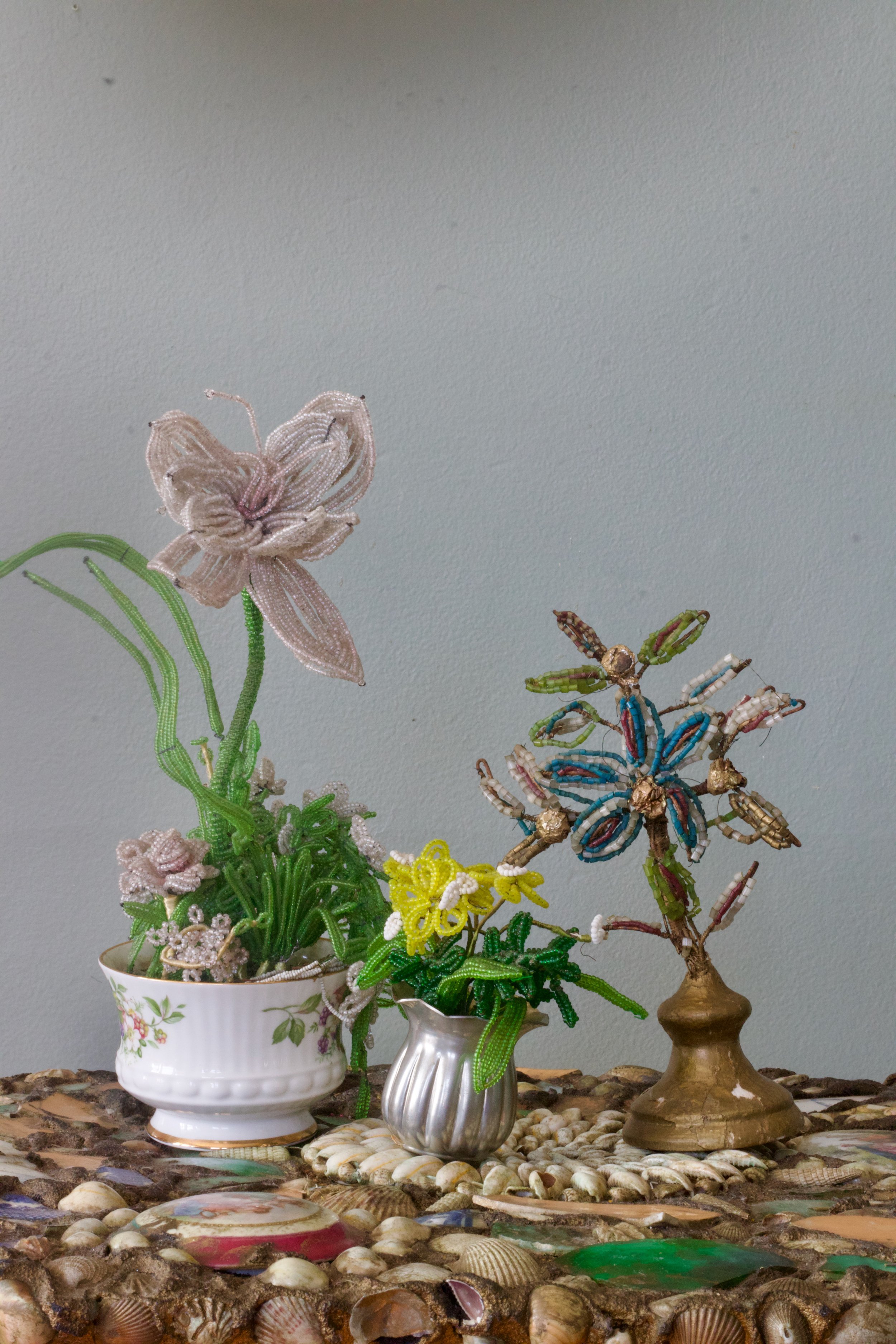

“You’re not alone if you’ve ever picked up a beaded flower stem or bouquet and thought, ‘I don’t know if it’s old.’”
Learn by Collecting
You learn a collectible by collecting. If you’re interested in collecting vintage French beaded flowers—and truly want to know the differences between old, not-as-old, and not-old-at-all—you can’t just read about them.
Reading helps. But it’s kinda like reading about France versus going to France. When you engage all your senses, and probe the finer details, you learn more than any book can teach you.
You have to hold them to know them.
I hope my images and tips help—and are a guide as you begin your vintage French beaded flowers collection. But like me, you’ll likely be duped a few times along the way. You’ll buy some French beaded flowers that aren’t vintage, but contemporary.
(That’s alright. They’re still beautiful. And if you keep collecting you can stuff them in a bigger bouquet and nobody will notice.)
This post is not a historical account of beaded flowers. It’s not a price reference guide. It’s not even a post about how I started collecting French beaded flowers and why I can’t stop. Those are posts for another day. Today, I’m offering a few simple tips for identifying the age of vintage French beaded flowers.
Tip 1: Take a Look at the Stem
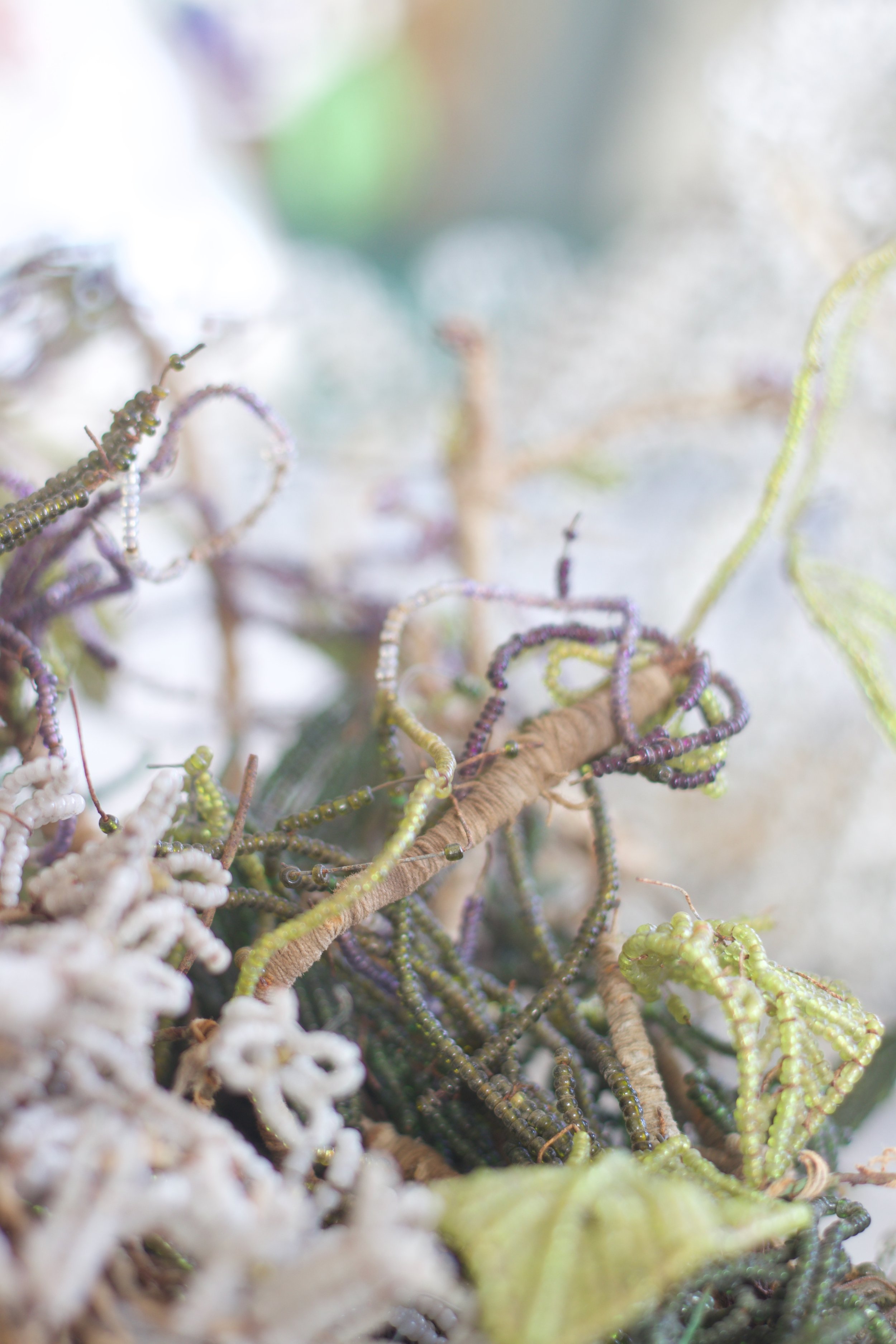

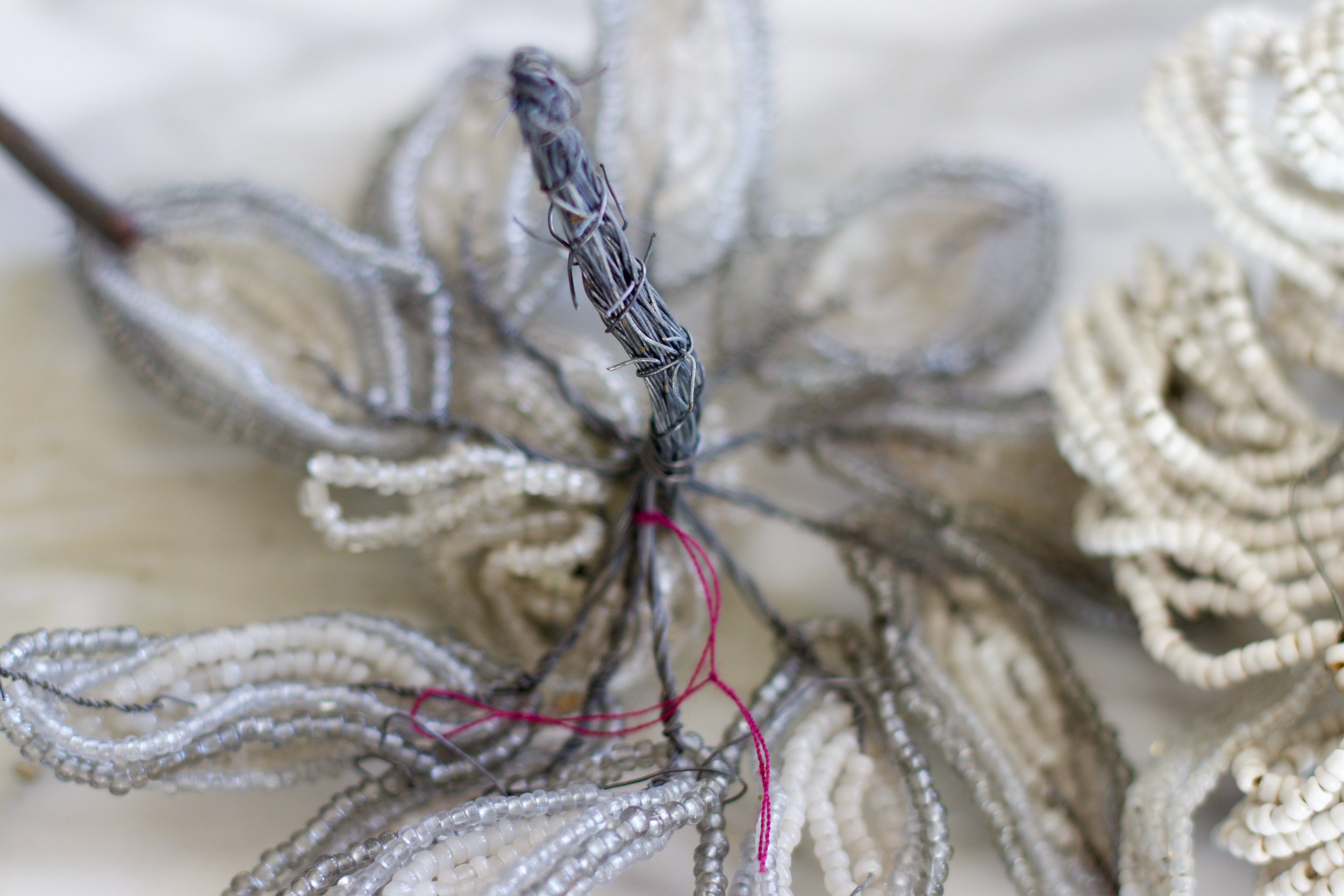
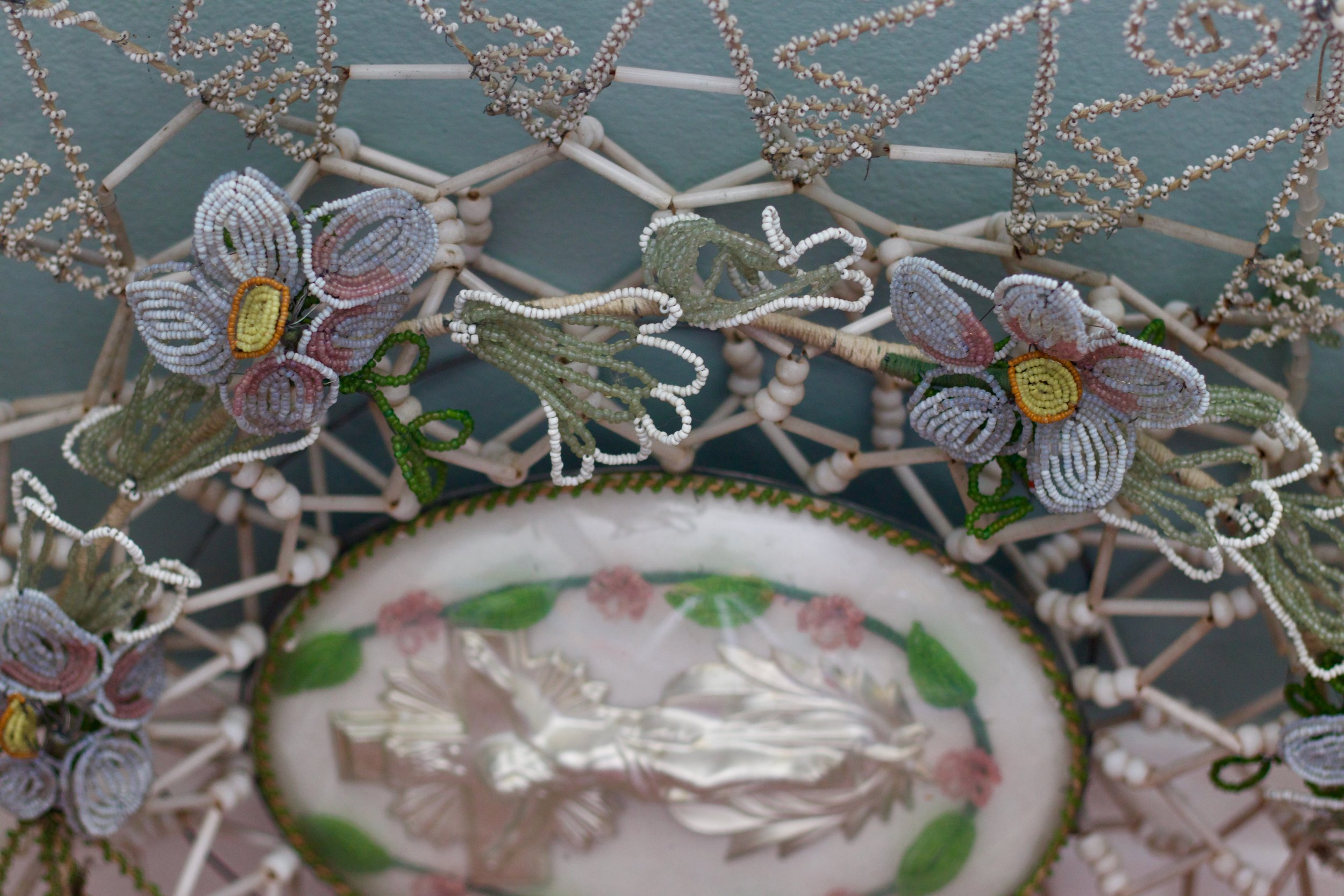
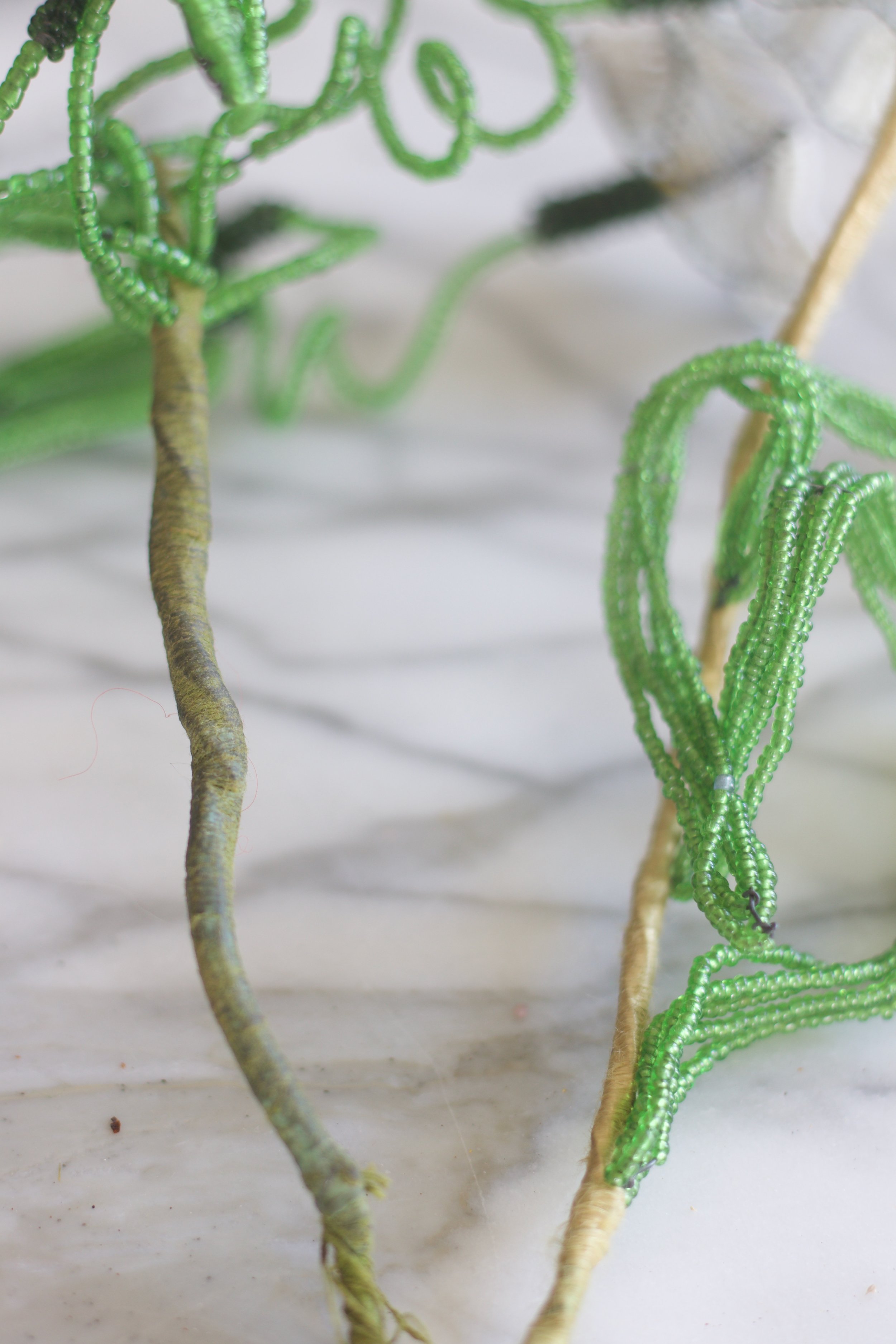
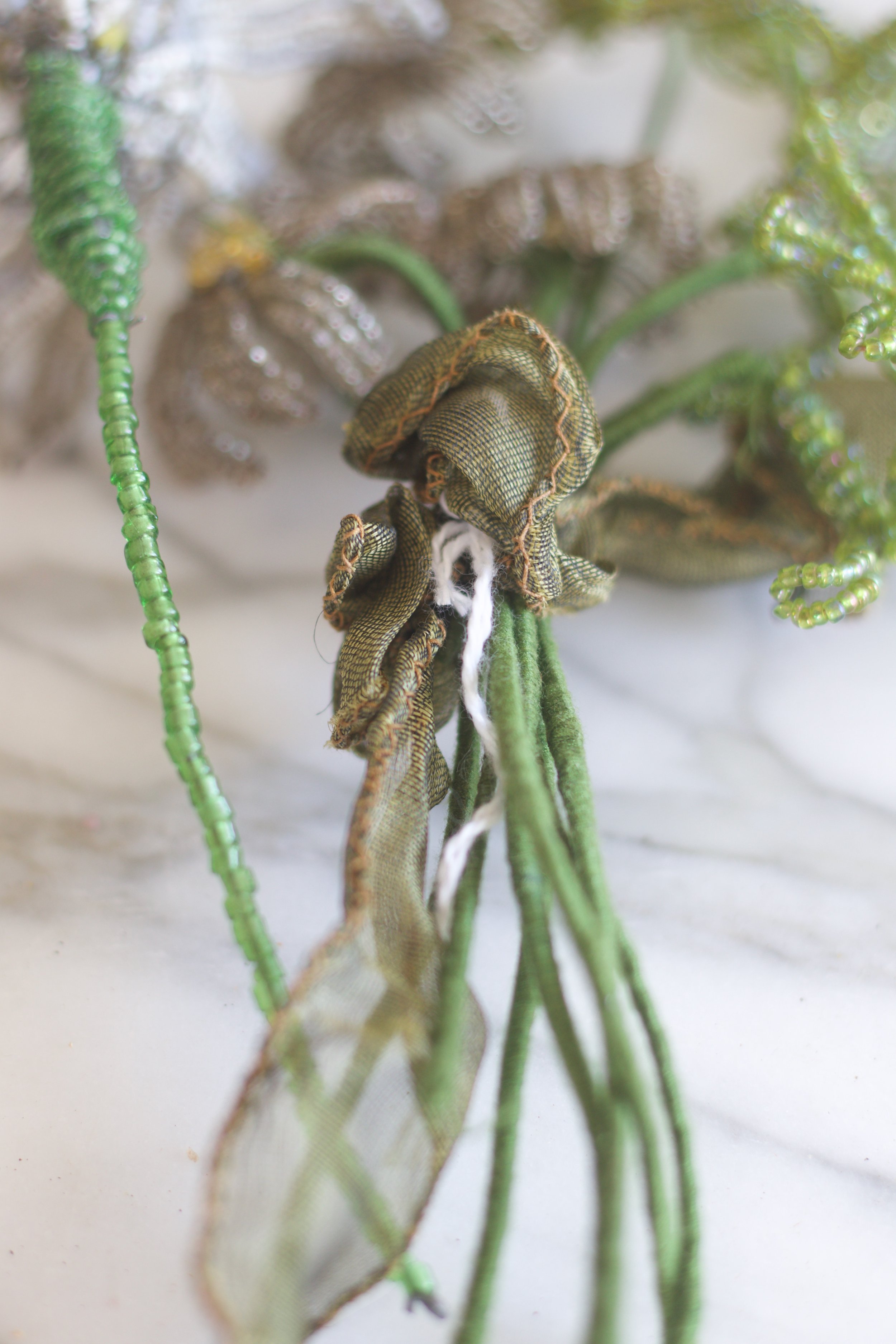
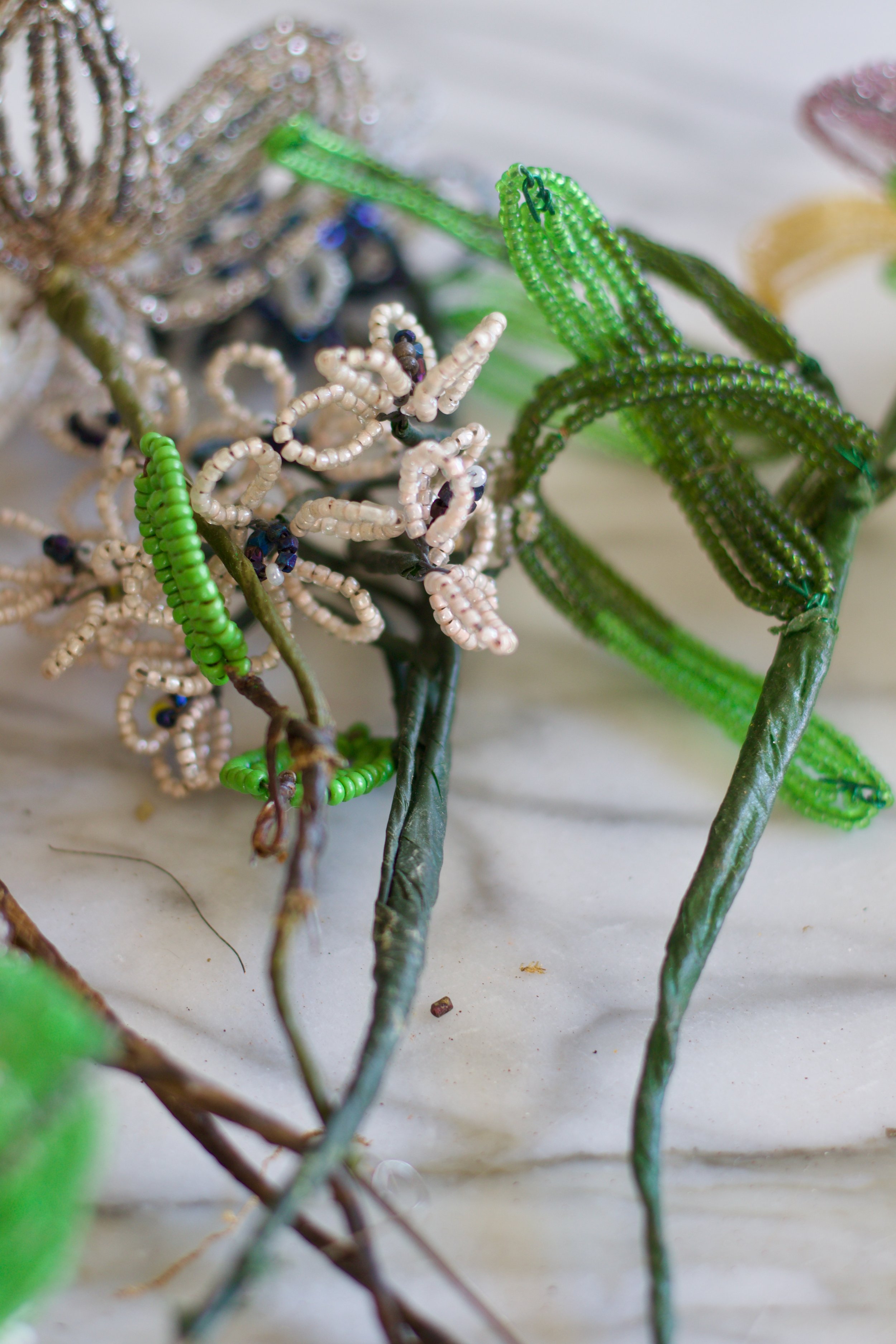
Vintage French beaded flowers show up with a variety of stems. A tell-tale sign that a flower is old is if the stem is covered in silk thread. The older the flower, the more faded the once-green thread is. And that thread is often fraying.
Take a look at the slideshow above. The first two images are of stems from flowers from the mid- to late-1800s. The thread looks tan. But I’m guessing it was once green. Like all truly old stuff, there’s a patina to the stems that you can’t reproduce.
In the third slide you’ll see another stem type typical of French beaded flowers from the late 1800s. It’s raw wire. That’s because many large old French beaded flowers, like this one, are from a deconstructed French beaded immortelle (see image 4).
In the fourth and fifth slide you’ll see stems that are typical of French beaded flowers from the 1930s -50s. These are what most people think of when someone says, “French beaded flowers.” (Ironically, French beaded flowers weren’t all made in France. Many were made from French kits sold at US department stores, like Marshall Fields.)
These flowers’ stems are either covered in green silk thread (less faded than the older pieces) or beads. You’ll never find a flower from this period with plastic green florist tape. You might find some with crepe florist tape—but not plastic.
“There are some incredible contemporary French beaded crafters who create flowers with fidelity to the original design. That means many modern versions will have stems covered in green thread or beads. ”
Finally, the sixth slide shows more contemporary vintage flower stems (likely between the 1960s and 80s). They are covered in that horrible, sticky plastic florist tape. Many from this period aren’t covered with anything. They’re just thick wire stems.
It’s worth mentioning that many newer beaded flowers (what I would call reproductions) have incredibly long stems. The majority of my beaded flower stems are no longer than 12 inches. So beware when you see a long stem. It might signal it’s new.
One final caveat when appraising stems: There are some incredible contemporary French beaded crafters who create flowers with fidelity to the original design. That means many modern versions will have stems covered in green thread or beads. So you can’t determine new from old solely on the stems. You have to also investigate the beads.
Tip 2: Take a Look at the Beads




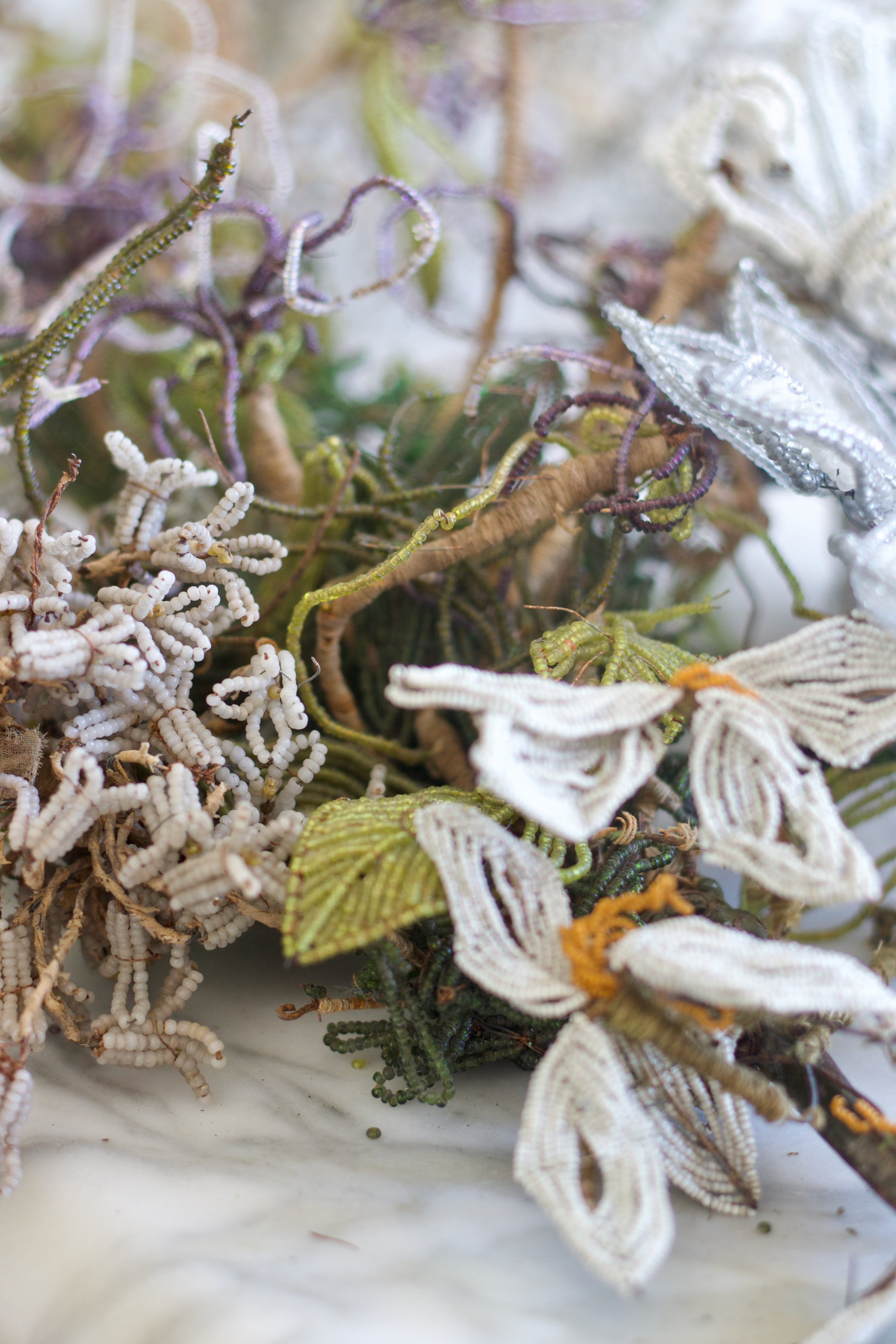

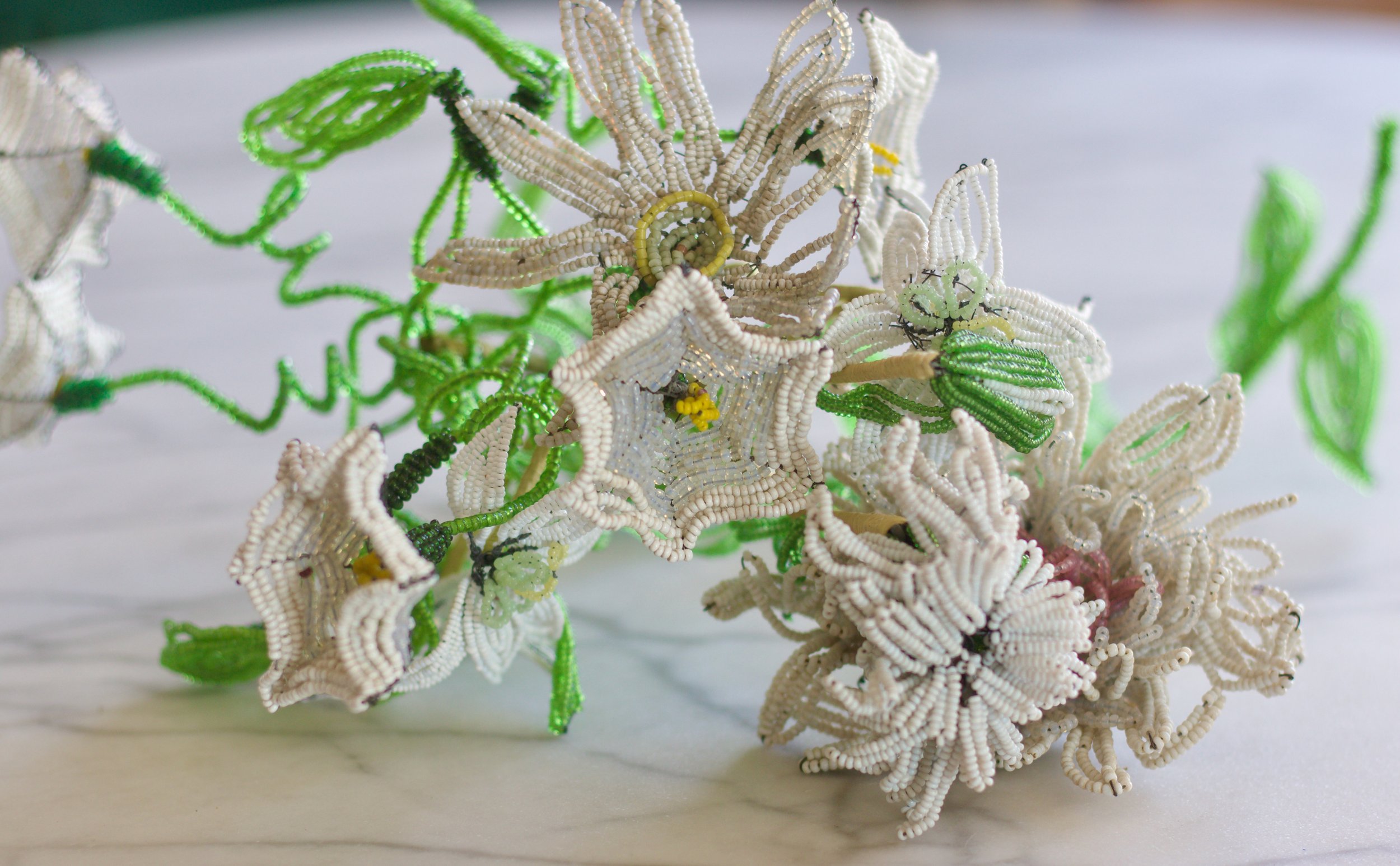

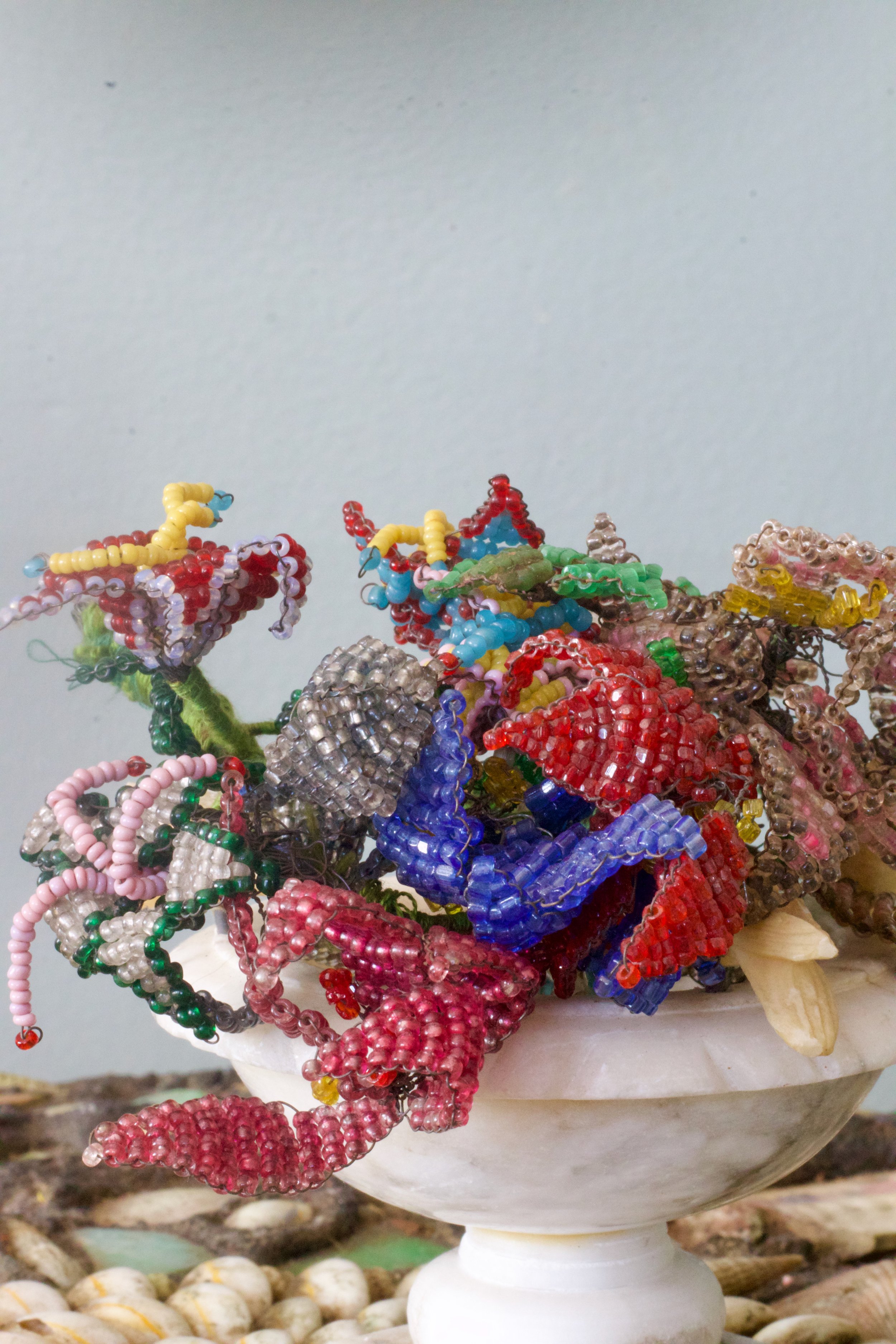
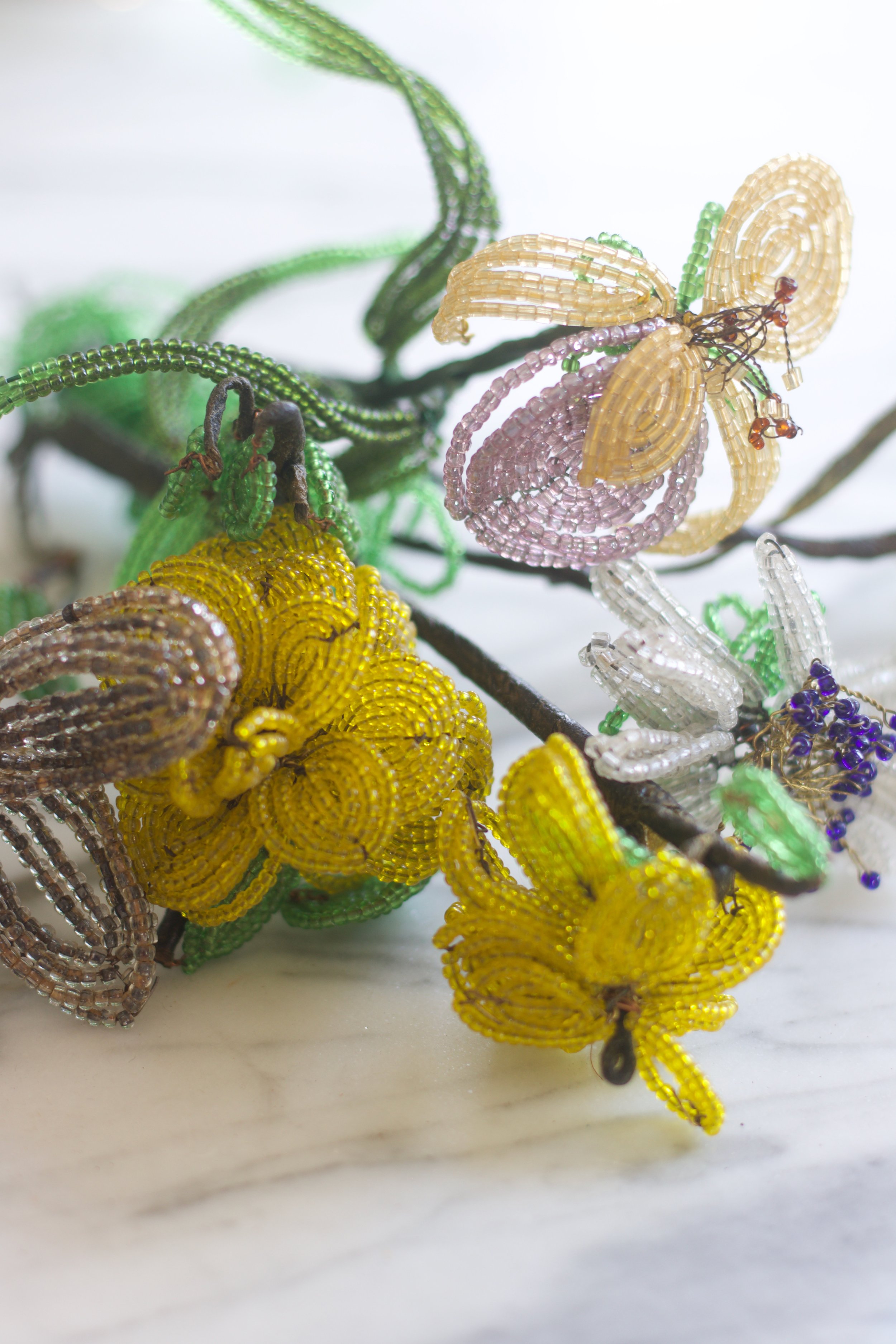


Size matters. At least the size of beads matters when you’re identifying the age of vintage French beaded flowers.
While not a hard and fast rule, it is typically true that the smaller the bead the older the flower. That being said, there isn’t much difference in the size of beads once you hit the mid 1900s and onward.
If you take a look at the first slide in the slideshow above, I’ve arranged flowers from oldest to newest. There’s a big difference between the left flower (mid- to late-1800s), the middle flower (1940s-ish) and the right flower, the newest of the bunch (probably 1960s, based on the stem, which has tape on it).
If the bead size is the same, the next thing you should look at is the quality of the beads. This is something you only truly understand once you’ve collected for a while and handled many different types of beaded flowers.
I don’t know any better way to describe it than this: the older beads don’t glisten. Newer beaded flowers have a sparkle. They are shimmery and most are less opaque. Many have a translucent quality. Take a look at the slideshow, which goes from oldest to newest, starting with slide three. The last few slides give you a feel for later vintage beaded flowers, likely from the 1960s and 70s.
Some newer flowers, like beaded daisies, use opaque beads (see slide two—left two flowers) but are shinier than their older counterpart (see slide two—right flower). It goes back to patina: the staining and fading that comes with years.
“Newer beaded flowers pop up on the market with labels like “vintage”—which might simply mean they are done in the style of vintage French beaded flowers. Or maybe the seller actually thinks they’re vintage. But they’re not.”
Finally, pay attention to the color of the beads. Crafters earlier than the 1960s likely weren’t using orange, red, turquoise, and bright purple. Those were the colors of the 1960s and 70s. I would suspect that as we have advanced with technology, there is a greater variety of beads available on the market, which enables crafters to create flowers more specifically reflective of actual flowers.
Older vintage beaded flowers are most often found in muted shades of pink, purple, blue, and yellow. Also, there are lots of white beaded flowers. You simply don’t see bright, punchy colors in the earlier beaded flowers.
Tip 3: Beware of the Label “Vintage”
About twenty years ago, Anthropologie sold new beaded flowers. I suspect that many shoppers bought them thinking they were vintage (back then Anthropologie sold more vintage than they do today). Newer beaded flowers pop up on the market with labels like “vintage”—which might simply mean they are done in the style of vintage French beaded flowers. Or maybe the seller actually thinks they’re vintage. But they’re not. Likely they bought them from another person who mis-labeled them as vintage.
Misinformation abounds when it comes to describing vintage French beaded flowers. Even on eBay and Etsy, sellers who craft beaded flowers label their own work as “vintage.” It’s confusing.
But go back to the basics. Ask yourself these questions:
What do the stems look like?
What are the size of the beads?
What are the color of the beads?
What is the quality of the beads?
And when you spot some, pick them up—even if they’re too expensive or you don’t plan on purchasing them. This is your best lesson. Better than this lesson, though I do hope you learned a thing or two.
